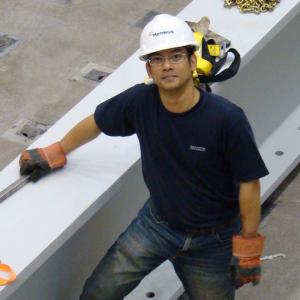9/11: 15 years onHow building design changed after 9/11
When buildings collapse killing hundreds – or thousands – of people, it’s a tragedy. It’s also an important engineering problem. For structural engineers like me, that meant figuring out what happened, and doing extensive research on how to improve buildings’ ability to withstand a terrorist attack. Research has found ways to keep columns and beams strong even when they are stressed and bent. This property is called ductility, and higher ductility could reduce the chance of progressive collapse. Mixing millions of high-strength needle-like steel microfibers into concrete – to prevent the spreading of any cracks that occur because of an explosion or other extreme force – creates material which is superstrong and very ductile. This material, called ultra-high-performance fiber-reinforced concrete, is extremely resistant to blast damage. As a result, we can expect future designers and builders to use this material to further harden their buildings against attack. It’s just one way we are contributing to the efforts to prevent these sorts of tragedies from happening in the future.

Chao Shih-Ho at jobsite // Source: uta.edu
When buildings collapse killing hundreds – or thousands – of people, it’s a tragedy. It’s also an important engineering problem. The 1995 collapse of the Alfred P. Murrah Federal Building in Oklahoma City and the World Trade Center towers in 2001 spawned many vows to never let anything like those events happen again. For structural engineers like me, that meant figuring out what happened, and doing extensive research on how to improve buildings’ ability to withstand a terrorist attack. The attack on the Murrah building taught us that a building could experience what is called “progressive collapse,” even if only a few columns are damaged. The building was nine stories tall, made of reinforced concrete. The explosion in a cargo truck in front of the building on 19 April 1995 weakened key parts of the building but did not level the whole structure.
Only a few columns failed because of the explosion, but as they collapsed, the undamaged columns were left trying to hold up the building on their own. Not all of them were able to handle the additional load; about half of the building collapsed. Though a large portion of the building remained standing, 268 people died in the areas directly affected by the bomb, and in those nearby areas that could no longer support themselves. (A month after the attack, the rest of the building was intentionally demolished; the site is now a memorial to the victims.)
A similar phenomenon was behind the collapse of the World Trade Center towers on September 11, 2001, killing nearly 3,000 people. When exposed to the high temperatures created by burning airplane fuel, steel columns in both towers lost strength, putting too much load on other structural supports.
Until those attacks, most buildings had been built with defenses against total collapse, but progressive collapse was poorly understood, and rarely seen. Since 2001, we now understand progressive collapse is a key threat. And we’ve identified two major ways to reduce its likelihood of happening and its severity if it does: improving structural design to better resist explosions and strengthening construction materials themselves.
Borrowing from earthquake protection
Research has found ways to keep columns and beams strong even when they are stressed and bent. This property is called ductility, and higher ductility could reduce the chance of progressive collapse. It’s a common concern when building in earthquake-prone areas.
